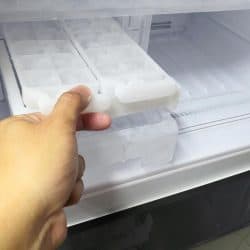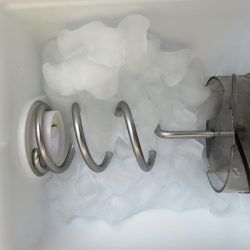Nothing's better than freshly-made ice. If you don't have time to freeze ice trays, though, and neither your fridge nor freezer can make ice on command, you need an ice maker on hand. How big is an ice maker machine, though, and what kind of impact does it make in your kitchen? We researched all of the different sizes available for ice machines to help you choose the right one for your space.
Ice machines come in a range of sizes. You can shop for ice machines and find makes between 22", 30", and 48" in height. These machines can weigh anywhere between 160 pounds and 200 pounds, with weight varying based on the machine's height.
Bringing an ice machine into your home means committing a significant amount of space to a single-use tool. If you organize your kitchen appropriately, though, you'll find that your new ice machine fits right in with the rest of your appliances.
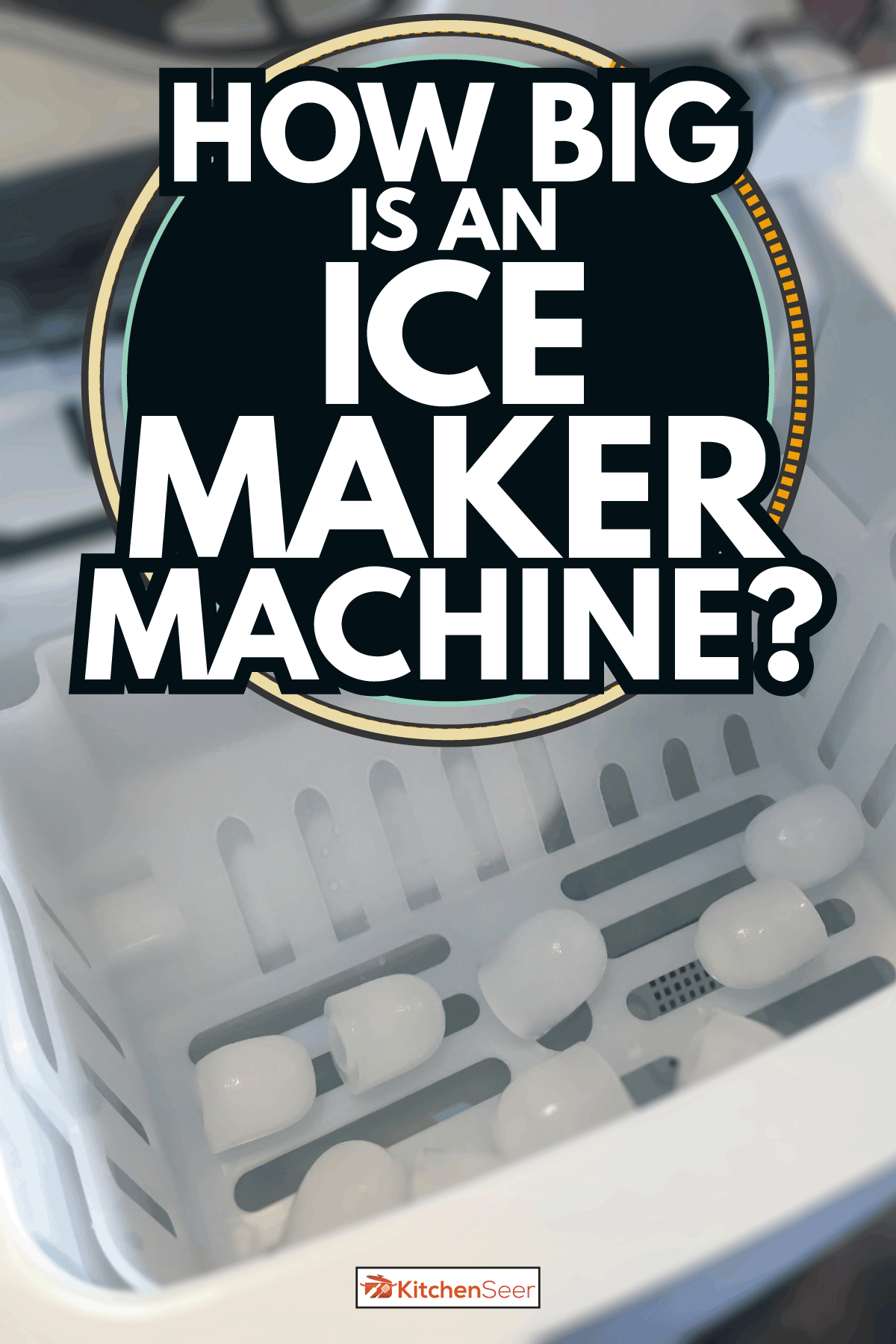
How Big Is An Ice Maker Machine?
While no two ice makers are made exactly the same way, all units tend to fall into one of three size categories. Smaller ice machines tend to cap out at 22" in height.
These machines are ideal for countertop use and find themselves most useful in homes or buildings will less square footage to go around.
Medium units tend to fall between 30" and 33" in size. These units can take up some of your counter space, but they tend to be more effective when installed alongside your dishwasher or refrigerator.
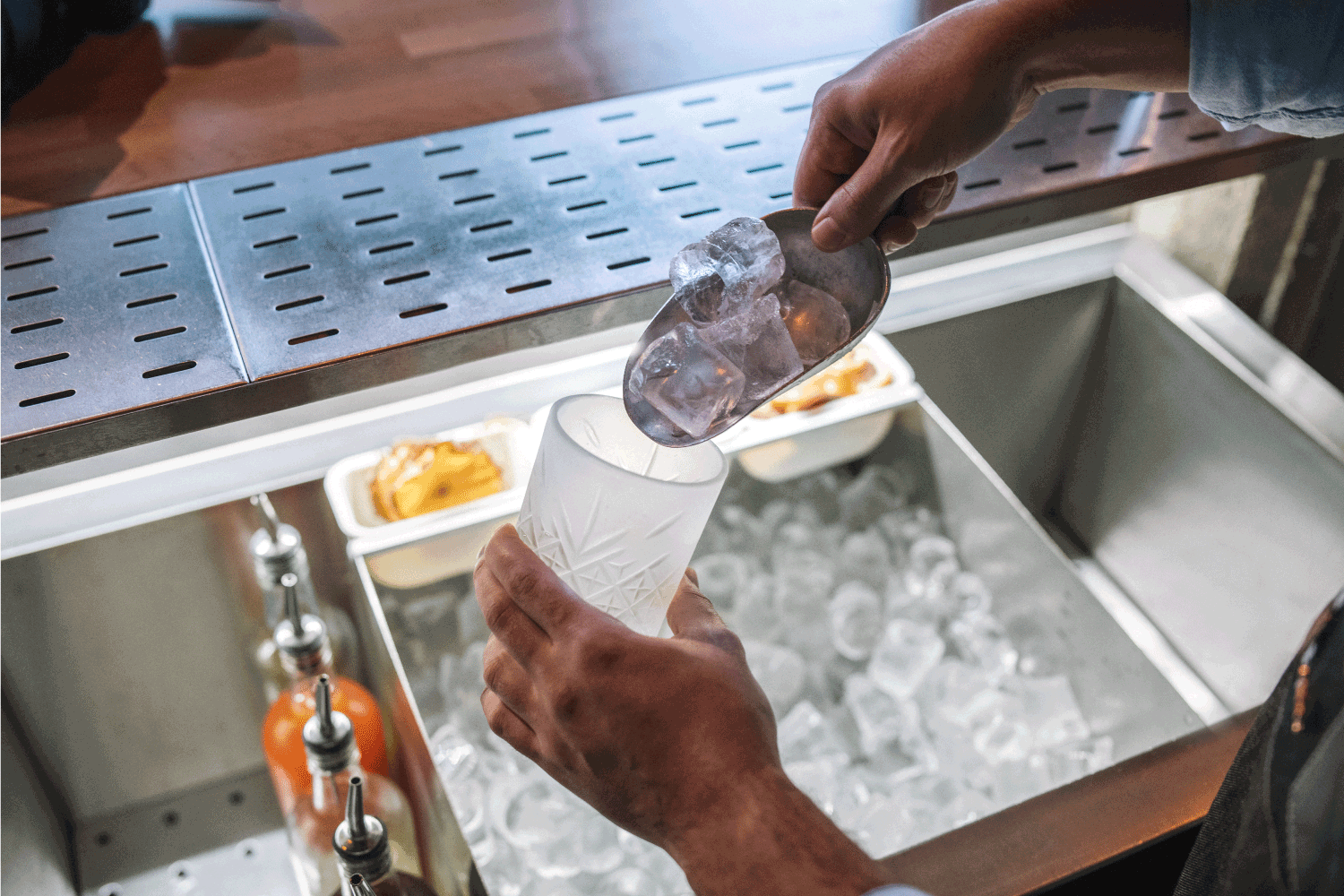
Finally, some of the largest ice maker machines available top out at 48" in height. These machines can produce nearly a thousand pounds of ice per day, making them an asset to any building that needs that kind of cooling power at the ready.
You'll need to make ample space for these units, though. They have no place on your countertop, as their weight can do serious damage to unprotected marble or stone.
What is the Price Range of an Ice Maker Machine?
The cost of an ice maker varies from unit to unit. You can also trust other factors to influence how much you'll end up paying for the machine you want to bring home. Some of the essential features to consider include a machine's:
Size
The larger your ice maker is, the more expensive it's going to be. Consider this: a small ice maker, coming in at 22" inches or smaller, tends to make upwards of 200 pounds of ice per day. In turn, you can expect to pay between $1,500 and $2,500 for its parts and installation.
Medium and large ice makers have similar divisions in their costs. Medium ice makers tend to cost between $2,500 and $5,000, while larger units can cost upwards of $10,000.
The price, of course, parallels the amount of ice you get on a day-to-day basis, but you'll want to consider your ice needs alongside your budget while doing your initial browsing.
Brand
Different brands run their ice makers at different prices. Hoshizaki, for example, tends to charge more for their ice makers than Scotsman does (though Scotsman prices will vary from unit to unit).
What's more, different brands release different kinds of ice machines. You'll need to determine early on if you want a self-contained ice machine or one that's modular. Similarly, talk to representatives at your local shop to determine whether a water-cooled unit or an air-cooled unit will suit you best.
Modular machines, to start, tend to be on the larger side. Naturally, they can produce more ice, but they also require more storage. Of the two types of machines, modular units tend to be more expensive, while self-contained units are a little more budget-friendly.
In that same vein, water-cooled ice machines tend to be more expensive than their air-cooled cousins. You benefit from a quieter run when you invest in water-cooling, but your budget may appreciate the air-cooler discount.
Age
Used ice makers tend to make it to market almost as frequently as new models do. If you're looking for a way to save money on this single-use appliance, you can always explore platforms like eBay to find the newest used ice maker available.
That said, used ice makers tend to come with their own quirks. You may need to pay maintenance costs in addition to the cost of a used machine's shipping and handling. New appliances, comparatively, tend to let you know how much you'll need to pay for a working unit up-front.
Used units also lack the protection of most modern warranties. By the time one of these units comes into your possession, it's likely that it will be less energy efficient and well-protected than its modern cousins.
It will, however, be more affordable, making it an excellent addition to a home, business, or outlet that wants to shave dollars off of the unit's initial cost.
The exchange and its monetary benefits are up to you, but you'll still want to keep it in mind as you explore the units available in your area.
Installation
It's not always easy to try and install a new appliance on your own. While doing so can save you money, it can also result in mistakes that may cost you more in the long run.
If you want to avoid those maintenance fees, it's important to discuss installation options with the vendor you've bought your ice maker from. These fees, of course, contribute to the overall cost of your ice maker, so make sure to get the details in full before committing to your investment.
Why Are Home Ice Maker Machines So Expensive?
When you buy an ice maker, you bring home an appliance that can produce hundreds of pounds of ice over a single day. While these appliances are single-use, they are exceptionally good at their jobs.
That volume, in addition to certain features - quieter ice production, water usage, and so on - all contribute to the cost of your machine.
How Deep is an Ice Maker Machine?
The depth of your ice maker machine will vary based on the overall size of the unit you invest in.
Medium units - ones that come in at about 30" to 33" inches in height - tend to have about 24 inches of depth to them. Smaller units have less depth to contend with, while larger units will take up more room in your kitchen.
You can look for the depth of your preferred ice maker either on its box or on its online listing. With this information at hand, measure out the space you have in mind for your ice maker.
If there's not enough room for your ice maker's tank, you may want to consider investing in a smaller unit or additional kitchen modifications.
How Long Do Ice Maker Machines Work?
The amount of time your ice machine lasts will depend on how frequently and how often you use it. If you use your ice machine daily, regardless of that machine's size, it will last for between four and five years. A machine that's used less frequently can last you up to ten years.
However, it's in your best interest to explore your options for maintenance or repairs while your ice maker is still under warranty.
Warranties offered by an ice maker's manufacturer can help you replace damaged parts or otherwise ensure that your ice maker continues to work long after its expected lifetime.
What Can Go Wrong With an Ice Maker?
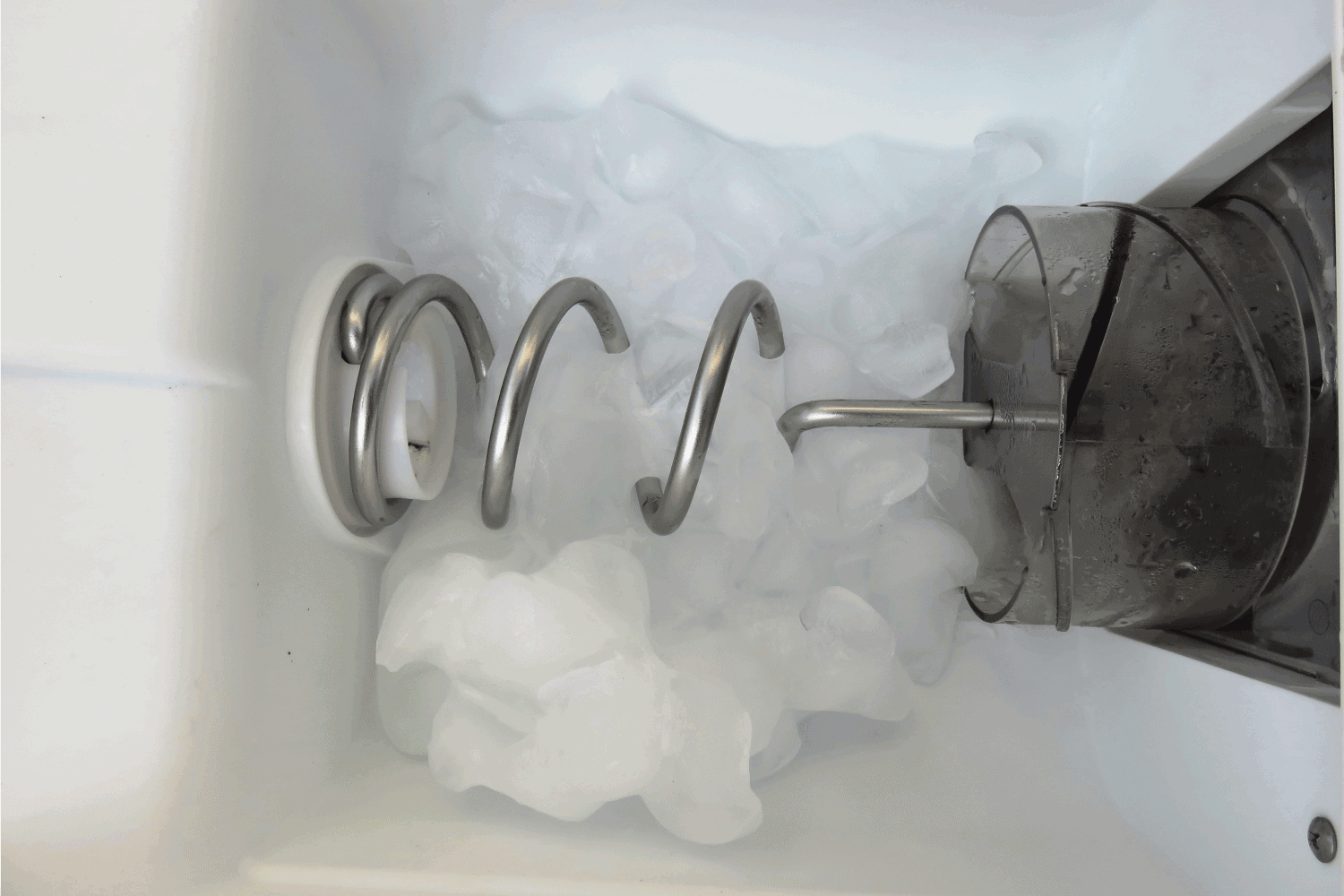
Like any other appliance in your house, your ice maker can fall victim to damage throughout its use. Some of the most common forms of damage to plague household ice makers include:
- Failed pause buttons
- Clogged filters
- Stuck ice
- Malfunctioning ejectors
- Water line leaks or malfunctions
- Inappropriately installed water inlet valves
- Thermostat failures
Even something as simple as an uneven leg can force your ice maker to shut down. Luckily, you can trouble many of these potential problems from the comfort of your home.
If you have trouble determining what's gone wrong with your ice maker, you can alternatively reach out to any of the professionals in your area for guidance. Regular inspections and maintenance can keep your ice maker running without a hitch for years at a time.
How Long Does it Take an Ice Maker to Make Ice?
The amount of time it takes your ice maker to make ice depends on your model and its method of ice generation. Some of the best ice makers on the market today can fill within an eight to ten-hour period.
If you're using that much ice regularly, you can consider keeping your ice maker running in twelve-hour stints.
However, make sure you invest in an ice maker that turns off once its basin is full. The last thing you want to contend with is loose ice that you don't have a chance to use.
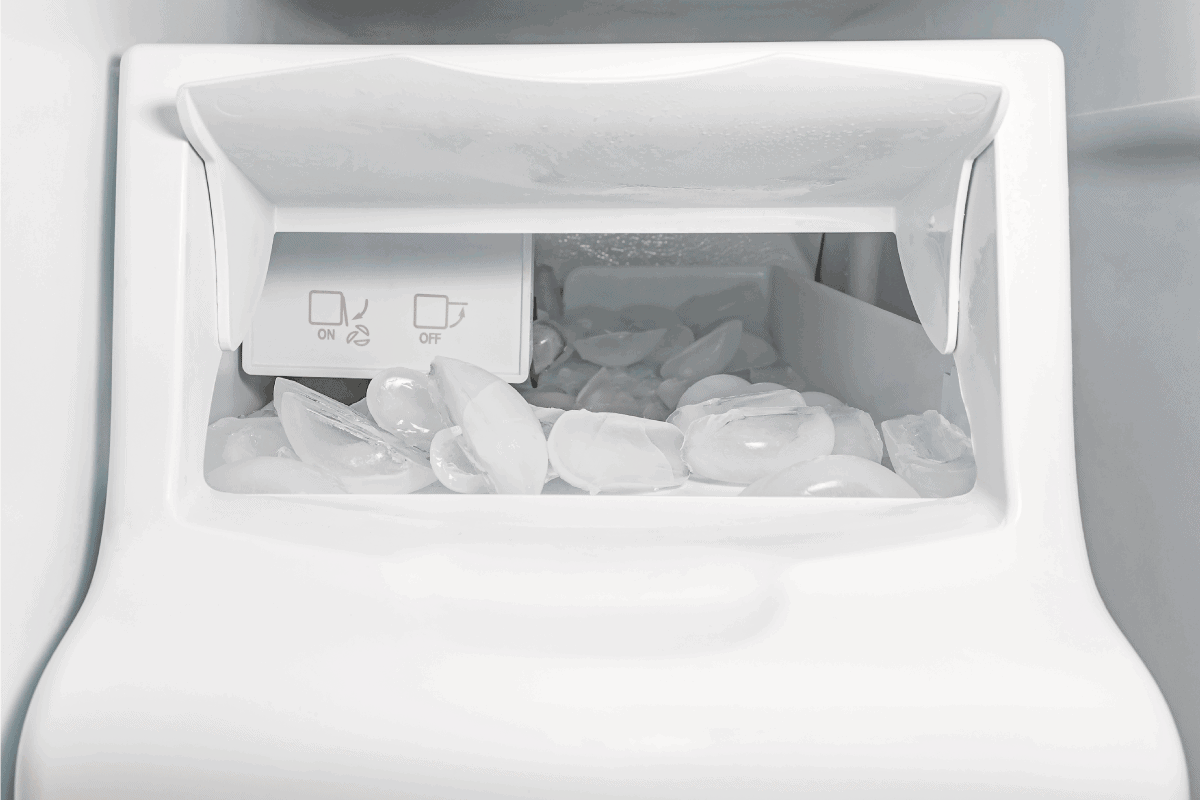
Preparing Your Kitchen for a New Addition
Ice makers are designed to make your life easier. If you don't have access to ice trays or an ice maker as part of your combination refrigerator/freezer, then these machines can freshen up your drinks in no time at all.
As you're shopping for your new ice maker, though, you'll want to make sure that your model of choice fits into your kitchen. Explore the dimensions of your kitchen ahead of time and prepare to do a bit of rearranging. Once you've made room for your new appliance, though, it'll be easier than ever to put it to good use.
Before you go, be sure to check out these other guides:
My Refrigerator Freezer Is Cold But The Fridge Is Warm – What To Do?
Can You Put Pampered Chef Knives In The Dishwasher?

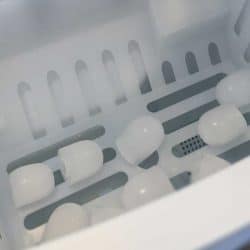

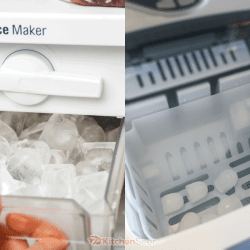
![close up photo of a portable-mini-ice-cube-maker many ice cubes green colored ice maker portable, Should You Turn Off Your Portable Ice Maker [Or Can You Leave It On All The Time]?](https://kitchenseer.com/wp-content/uploads/2022/09/close-up-photo-of-a-portable-mini-ice-cube-maker-many-ice-cubes-green-colored-ice-maker-portable-250x250.jpg)
